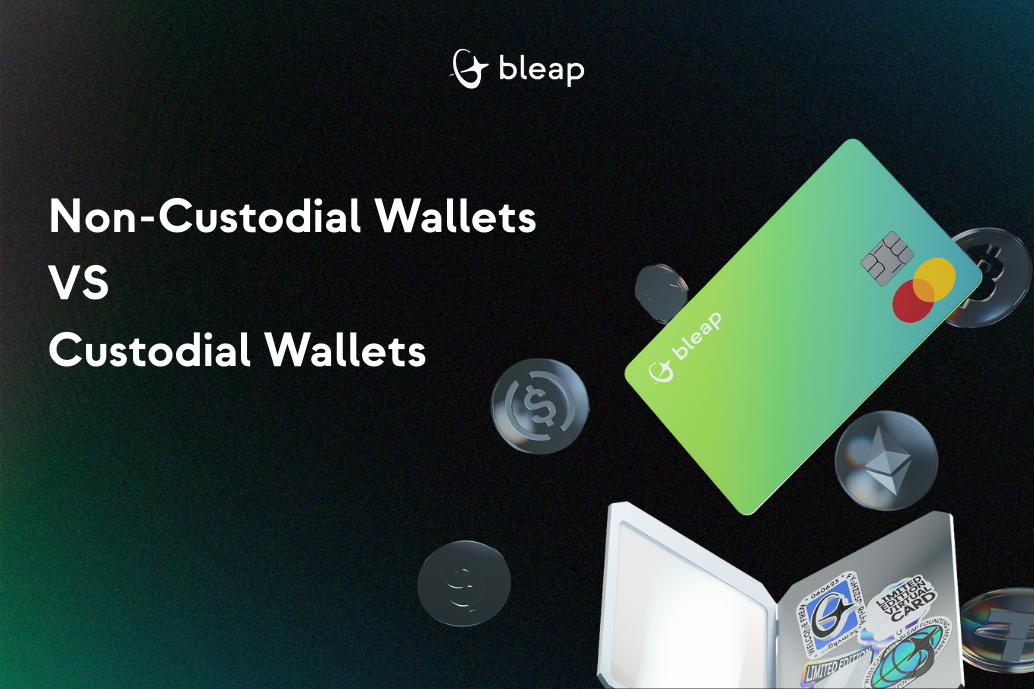
This content is for educational purposes only and should not be considered financial advice. Crypto investments carry risks, including loss of capital. Always do your own research or consult a licensed advisor before investing.
A non-custodial wallet is a crypto wallet where only you control the private keys, while a custodial wallet is managed by a third party such as an exchange. Non-custodial wallets provide full ownership, stronger security, and more privacy, whereas custodial wallets are easier to use but carry risks of hacks, frozen funds, or platform failures.
Here’s the difference at a glance:
A custodial wallet is one where your private keys are held by an external provider, usually a crypto exchange or wallet service. This makes it easy to start using crypto but also means you are trusting someone else for access and security.
The main advantage of custodial wallets is convenience. They are easy to set up, often come linked with exchanges, and usually offer password recovery. However, the drawbacks are significant. Custodial wallets are frequent targets for hackers, withdrawals can be frozen without notice, and if the service provider collapses, users risk losing their assets. Privacy is also reduced, since most custodial wallets require identity verification.
In short, custodial wallets provide convenience at the expense of control.
A non-custodial wallet gives you complete and exclusive control over your private keys. This principle reflects the foundation of blockchain itself: “your keys, your coins.” With a non-custodial wallet, no exchange, bank, or government can block your transactions or seize your funds.
The benefits of this model are rooted in the core tenets of crypto:
The critical responsibility is safeguarding your recovery phrase, a 12-to-24-word master key that can restore your wallet. If it is lost, there is no “forgot password” option, and you could lose access to your assets permanently.
Non-custodial wallets combine independence, privacy, and security in a way custodial wallets cannot. Since you hold your keys, you are the only one who can authorize transactions. This removes any dependency on exchange servers or centralized providers, significantly reducing the risk of hacks, downtime, or sudden restrictions.
They also allow for greater privacy, since mandatory KYC is often not required. Modern non-custodial wallets support multiple currencies and work across devices, making them both flexible and practical.
For anyone who wants real ownership of digital assets, a non-custodial wallet is the safer long-term choice.
The most common reason people hesitate to use non-custodial wallets is the fear of losing access to their funds. In practice, with simple precautions, self-custody is the safest way to store crypto.
For beginners, the best wallets are those that combine security with simplicity. They should feature intuitive interfaces, straightforward recovery options, and support for the most common cryptocurrencies.
Bleap Wallet stands out in this category. It is non-custodial by default, easy to use for first-time users, and offers a debit card that provides 2% cashback on global spending. This makes it practical both for storage and everyday use.
Advanced users often prefer wallets that provide greater control. These include adjustable transaction fees, integration with hardware wallets, and advanced security features. Ledger and Trezor remain trusted names for hardware wallets, particularly for those managing larger holdings.
The process is simple but requires attention to security.
After completing these steps, you will have full control of your funds without relying on any third party.
While many non-custodial wallets prioritize security over user experience, Bleap was built to bridge that gap. It offers the full control and security of a non-custodial wallet with a clean, intuitive interface that makes it perfect for both beginners and experienced users.
Bleap also offers practical features beyond basic storage. Its non-custodial debit card provides 2% cashback on global spending, making it useful in everyday life. Multi-wallet support allows you to manage your entire portfolio—including funds stored on hardware or software wallets—all within a single app.
The decision between a custodial and a non-custodial wallet depends on your comfort level and goals.
Ultimately, many users start with custodial wallets for simplicity, but most serious investors move toward solutions that maximize ownership and safety. MPC wallets are quickly becoming the “best of both worlds,” offering control without the complexity of managing private keys alone.
It’s a crypto wallet where only you hold the private keys, giving you full, unrestricted control and ownership of your funds.
Yes. A non-custodial wallet eliminates third-party risks such as hacks, platform failures, or government seizures. Your security depends on your own precautions, not on an external provider.
No. By definition, a legitimate non-custodial wallet provider never has access to your private keys or funds. They provide the interface, but ownership always remains with you.
If you lose your recovery phrase without a backup, you will permanently lose access to your funds. Securing your phrase offline is the single most important security step.
Bleap is built on MPC (Multi-Party Computation) technology, which removes the need for a single vulnerable seed phrase. Instead, key shares are split across multiple parties, making the wallet more secure and beginner-friendly. This approach delivers the benefits of a non-custodial wallet, you remain in control of your assets while reducing the risks of losing access through human error.
On top of that, Bleap combines this advanced security with a user-friendly design, fee-free on-ramp, and unique features like a 2% cashback Mastercard. This makes it one of the few wallets that is both secure enough for serious investors and practical for everyday use.
The principle is simple: your keys, your coins. Custodial wallets may offer simplicity, but they expose users to serious risks, from hacks to frozen withdrawals.
Non-custodial wallets eliminate those risks by giving you full control. With Bleap, you don’t need to compromise between usability and security, you get both.
Taking control of your private keys is not just a matter of security. It is the foundation of financial independence.
Features
Improvements
Bug fixes